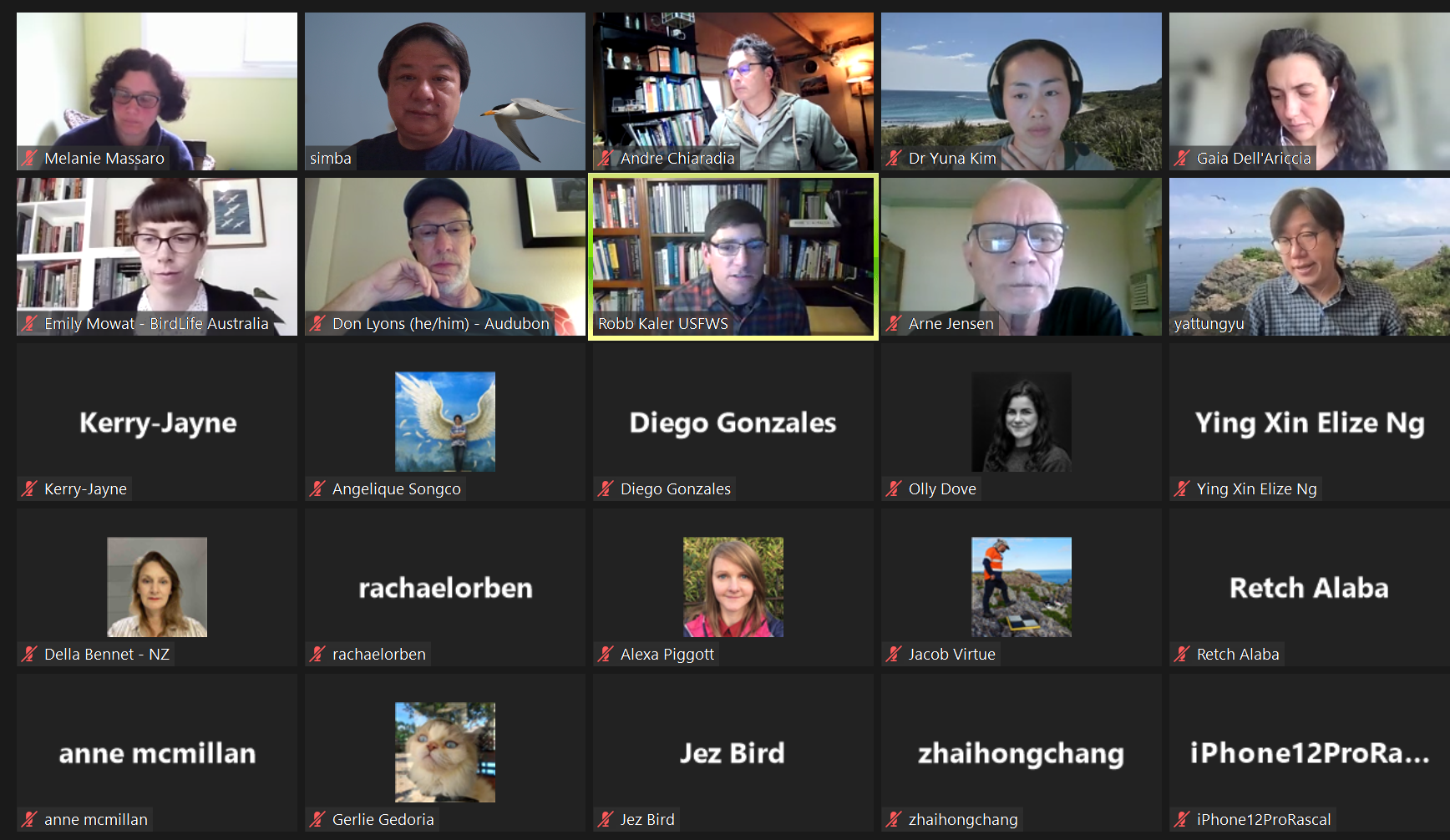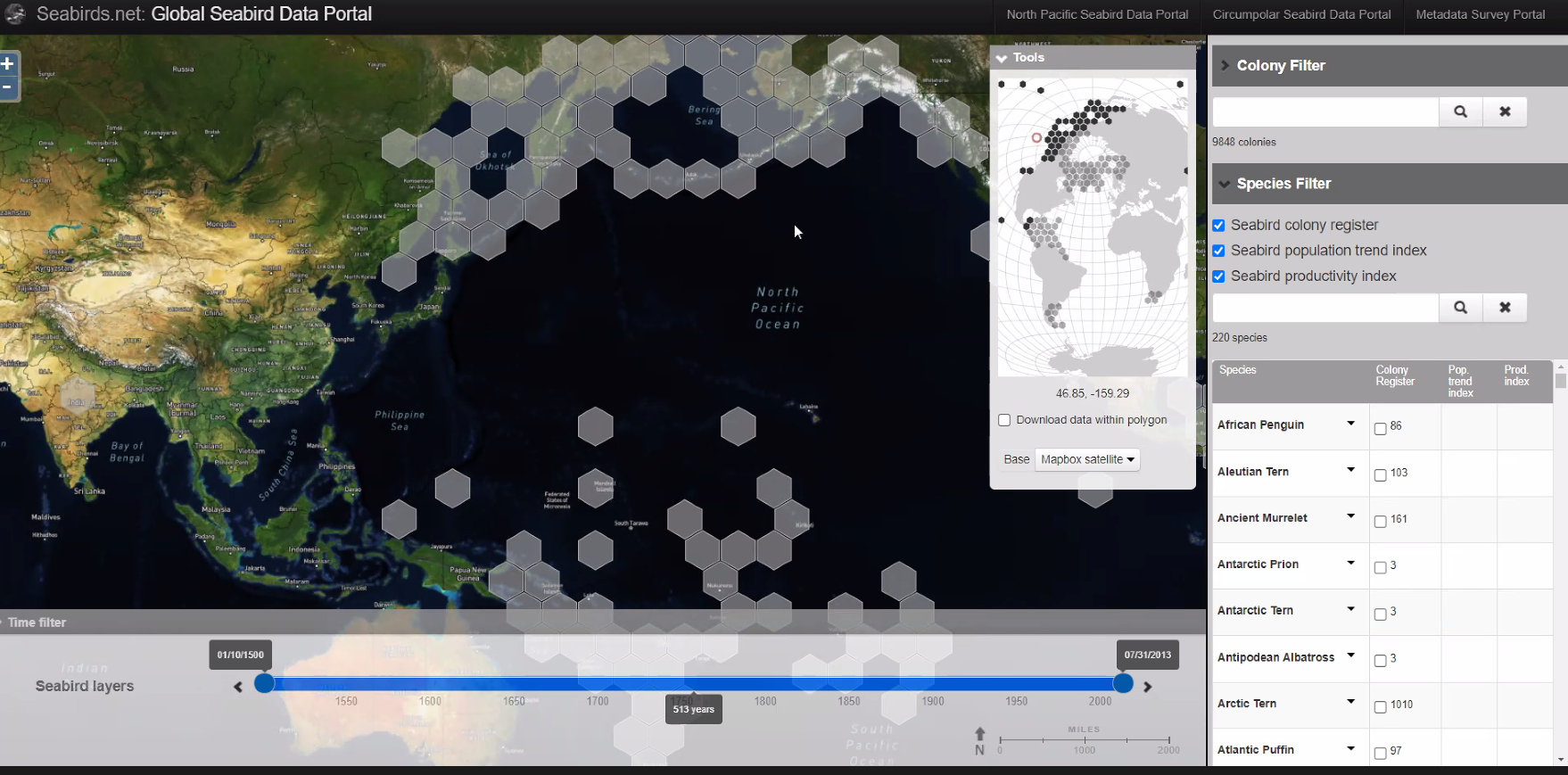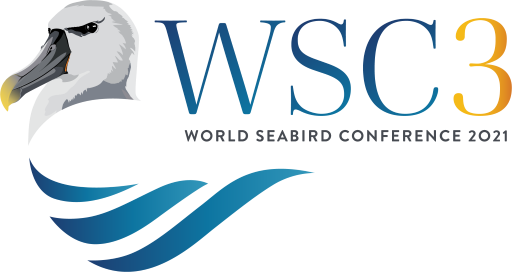The Third Seabird World Conference was held virtual from 4 to 9 October 2021 (covering all time zones). It was scheduled to be convened in Hobart, Australia in 2020 but postponed due to the Covid-19 pandemics. Finally, the World Seabird Union decided to hold the meetings online – a challenge because of time zone difference but it ended up as a very successful conference, with 802 delegates from 54 countries, both figures are higher than the previous two conferences (Victoria, Canada 2010; Cape Town, South Africa 2015).

participatns joining the event virtually
There were 8 workshops, 17 symposia, 29 general sessions and 575 presentations at this virtual conference. For the first time, the Seabird Working Group of the EAAFP organized a workshop at the WSC: Strengthening and harmonizing seabird researcher’s network for better coordination on seabird conservation in the East Asian-Australasian Flyway Region. Robert Kaler and Yu Yat-tung, Chair and Coordinator of the EAAFP Seabird Working Group, led discussion on strengthening the network of experts and called for more seabird sites to join the EAAFP Network. The response from Australia and the Philippines was very positive. Seabird Group in Australia suggested more seabird sites can be added as Flyway Network Sites under the EAAFP. Twining of seabird sites that will provide opportunities for cooperation was welcomed by all participants. Angelique M. Songco, Superintendent of Tubbataha Reef Natural Park of the Philippines (a Flyway Network Site of the EAAFP), said it had been one of the aims of the natural park to be connected with more seabird sites along the flyway.
The workshop also covered discussion on priority species groups of the EAAFP. In the last few years terns had been the main focus because the Aleutian Tern is the species of conservation concern in Alaska, while restoration and conservation of the Chinese Crested Tern had also been the main focus and achievement of the Flyway Network in the last 10 years (there was a separate presentation on the Chinese Crested Tern Restoration at the Symposium on Outcomes and Progress of active seabird restoration projects). Other seabird species such as the Short-tailed Shearwater was also mentioned as potential focus.

Global Seabird Data Portal
Participants have also agreed on taking a more active coordination on colour banding and marking of seabirds along the Flyway.
The workshop introduced the Global Seabird Colony Register. This is a project of the World Seabird Union and it aims to identify all seabird colonies of reasonable sizes. The Seabird Working Group aims to collect seabird colony data in Asia. At the moment only Asian portions of Russia have data listed on the Global Seabird Portal. Information from other Asian countries is needed. For further information of the work please contact Simba Chan at simba2018reborn@gmail.com
Link to the Global Seabird Data Portal: Global Seabird Data Portal (seabirds.net)
Interestingly, the World Seabird Conference was initiated from a meeting in Asia (Pacific Seabird Group Meeting in Hakodate, Japan in 2009), but participation from Asian countries still remains low when compared to North and South Americas, Australasia and Europe. However, we believe this will change soon as the Philippine National Seabird Forum that was held one week after the WSC (13 to 15 October 2021) was very successful with good participation from all regions in the Philippines. Seabirds are becoming an important focus in conservation in Asia.
Prepared by Simba Chan.





